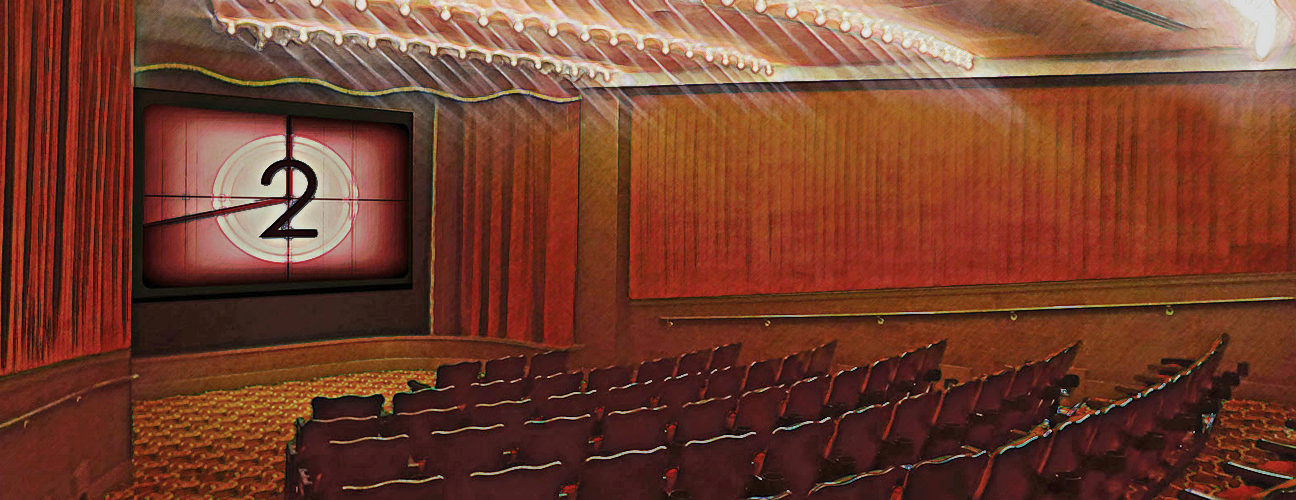- “Movies lead us into a fantasy world where the possibilities are endless. They make me feel like love is possible. They distract me for a certain amount of time, which is always nice. They also inspire me. They educate also.”
- “I’d say refreshment is pretty much all there is to it. Human brains can’t handle reality for extended periods of time. We need the movies, TV shows, music, etc., to help our minds cope by letting us escape from the world around us for a certain amount of time.”
- “gets you out of your world and puts you in other worlds, which you enjoy living in for a while, cos you’re somehow bored of your life’s routine, and want to live the change!”
The answer to why we go to the movies can be found by exploring human behavior and its place in society.
Human Behavior – Comfort and Conflict
We go through life with two simple objectives. We seek COMFORT and avoid CONFLICT. We do this every moment, every day. It is necessary for survival and the basic concept of all human behavior.
Physical comfort
Human history is one big journey in the search for COMFORT. Comfort corresponds to everything contributing to the well-being and convenience of the material aspects of life. Meaning, it constitutes an improvement in living conditions. We’ve created clothes to protect us from the cold, we’ve invented the wheel to easier carry goods or move from one place to another, we build houses to protect us from all kinds of weather situations, we build bridges to easily cross over rivers instead of swimming. We have cell phones to call people anytime and anywhere we want. We constantly invent new things to make our lives easier and safer. As human beings, we will always choose the easiest and safest way to finish a task or reach a goal.
Therefore, money is probably the biggest invention in the search for comfort. It’s an easy product to exchange for materials that we need for our comfort. Money symbolizes comfort and we are always in search of money to maintain our comfort, physically and psychologically.
Psychological comfort
It’s important to satisfy our need for materialistic possessions in life to lead a comfortable life. Psychologically we need friends and family or other people in society like police officers or doctors to be comfortable. We need to know that they will be there when we are in need. Being surrounded by familiar people gives us a very comfortable feeling. Since we know how our family and friends behave and think we won’t encounter unpleasant surprises or situations when we are with them. With them, we operate in our comfort zone. But unfortunately, the world around us changes constantly, storms destroy houses, cars break down, beds need new mattresses, friends betray each other, etc… It forces us to adapt, which means we have to take action, do or learn a new skill to maintain our physical and psychological comfort.
However, we never reach total comfort. Once we reach our goal of what we thought “if I have this I or I’ve done that, I would be happy or feel comfortable” the next goal is already set, and we work to achieve the new goal to make us feel comfortable.
To satisfy our needs and find comfort or happiness we need to take action, some are easy, some are difficult. After identifying what we want or need, we ask ourselves: “how are we going to get it?” The moment we pose the question ‘How’ we can speak about conflict. It can be internal or external.
Comfort and conflict go hand in hand.
We need to go through conflict(s) to reach comfort.
Since we are constantly seeking comfort we try to avoid conflict at all costs, getting into a bar fight or having a verbal discussion with somebody takes us out of the comfort zone we so dearly love to stay in. We only take on a conflict if we have to, in order to survive or maintain our comfort. But on the other hand, we need to take action or face a conflict to gain comfort. Everyday life is a chain of little conflicts or overcoming obstacles like driving through traffic to be on time at work, finding the best quality groceries to feed ourselves, maintaining a happy relationship with your loved ones.
A conflict works on two levels, internal and external.
Internal Conflict
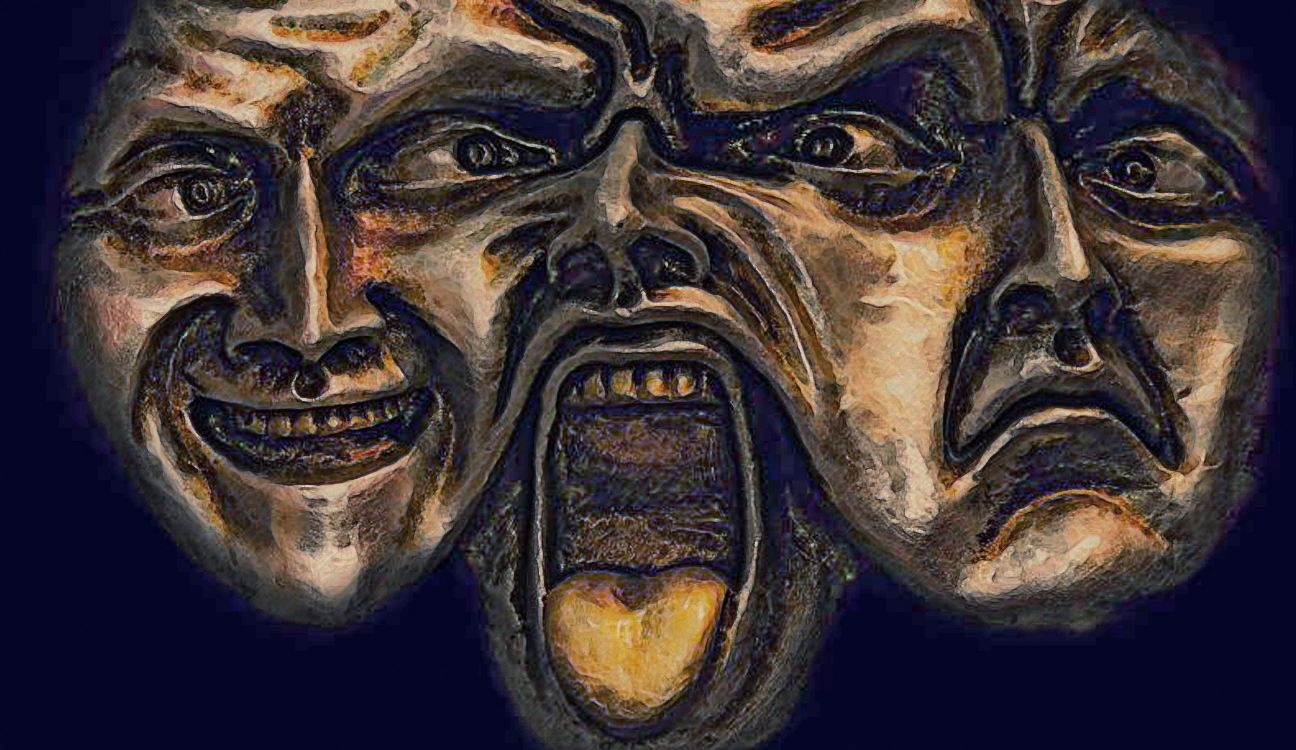
An internal conflict concerns our sense of what is right or what is wrong.
It’s about our own life values and beliefs. It plays in our minds.
Values are about what is most important to us and our standards for judgment and appraisal. Beliefs are statements, assertions, or theories of what we accept as true. It’s our basis for decision-making, choosing, and acting.
Our values and beliefs are taught or forced upon us by our parents, family or the society we live in. However, for more liberal thinkers their values might change as they grow older when they are looking for information or new experiences outside the family or society.
External conflict
An external conflict is a struggle between a person and an outside force, like a fight between two people, or countries fighting over territory, or a person trying to survive a hurricane or earthquake. An external conflict can be even as simple as trying to open a door that is locked and won’t open up.
Feelings and Emotions
Emotions and feelings are often spoken of as being one and the same, and it’s easy to get them mixed up and confused. Although related, there is a difference between emotions and feelings, and they each serve us in their own unique way.
The way we behave in this world is the product of our feelings and emotions. Learning the difference can provide us with a better understanding of not only ourselves but also of the people around us.
What are Emotions?
According to Carl Jung, objects draw and invoke emotions. This is a natural phenomenon and is essential for human survival. When you encounter something unknown, you may have a range of sensations such as curiosity, fear, or even ambivalence. When you give the unknown object a name, it becomes a significant symbol of meaning. It is through this process that emotions become attached to every object in the universe. When some object is given a name, it not only becomes a “thing”, it also becomes something of “meaning”. On a daily basis, these emotions can be as subtle as: “like”, “dislike” or “ambivalence”. Even a state of ambivalence is nevertheless a state of meaning. Therefore, to put it simply: Nothing, is ever meaningless.
Emotions establish our attitudes towards things and are connected to our biological systems. They are designed to alert us of danger or to draw us to something pleasurable. If we didn’t possess emotions, we would carelessly walk right up to a lion in the wilderness. We would not climb a tree and pick fruits to eat when we are starving. Our sense of life is an emotional form, in which our world experience finds value, our reason for existence, and defines our relationship with the things that surround us.
Emotions are intense but temporary.
Another key component of keeping us safe is judgment.
Judgment
Judging others is a natural instinct. For the most part, we are doing so for survival. We want to surround ourselves with people whom we can trust because it makes us feel safe and secure. We push away those we deem untrustworthy because we fear they may harm us.
The instincts we have on judging others served us well in our efforts for survival, but we have evolved past the point where survival is life or death. Now, we are protecting emotions, status, and morals. Observing how others around us behave triggers judgment. We decide who is trustworthy or dangerous. But also can result in feeling better than the other person because of the morals they hold or the way they behave.
Being judgmental is frowned upon nowadays. It’s better to keep judgment to ourselves but since it’s a natural human instinct we can’t help ourselves and walk through life while judging.
What are Feelings?
Our brain reacts to all sorts of triggers in our internal thoughts and external environment. Triggers or “cues” generate rapid and automatic emotional reactions in our brain that result in the changes in our body that we consciously experience as feelings. For example, when we have an emotional reaction to something which triggers ‘fear’, such as a dog violently barking at us or a gunshot nearby, our heart rate speeds up, and our breathing becomes more shallow, resulting in the feeling of ‘stress’. We might notice our muscles are tense or our stomach may seem knotted up. Feelings are the way you consciously experience your body changes that are triggered by emotional reactions to cues.
Feelings are products of emotions. But unlike emotions are short-term and intense, feelings are low-key, stable and sustained over time.
A feeling lives inside us, it’s not visible, but through emotions we communicate to the outside world what lives inside us. For example, an artwork expresses or communicates the artist’s personal emotional perspective of life.
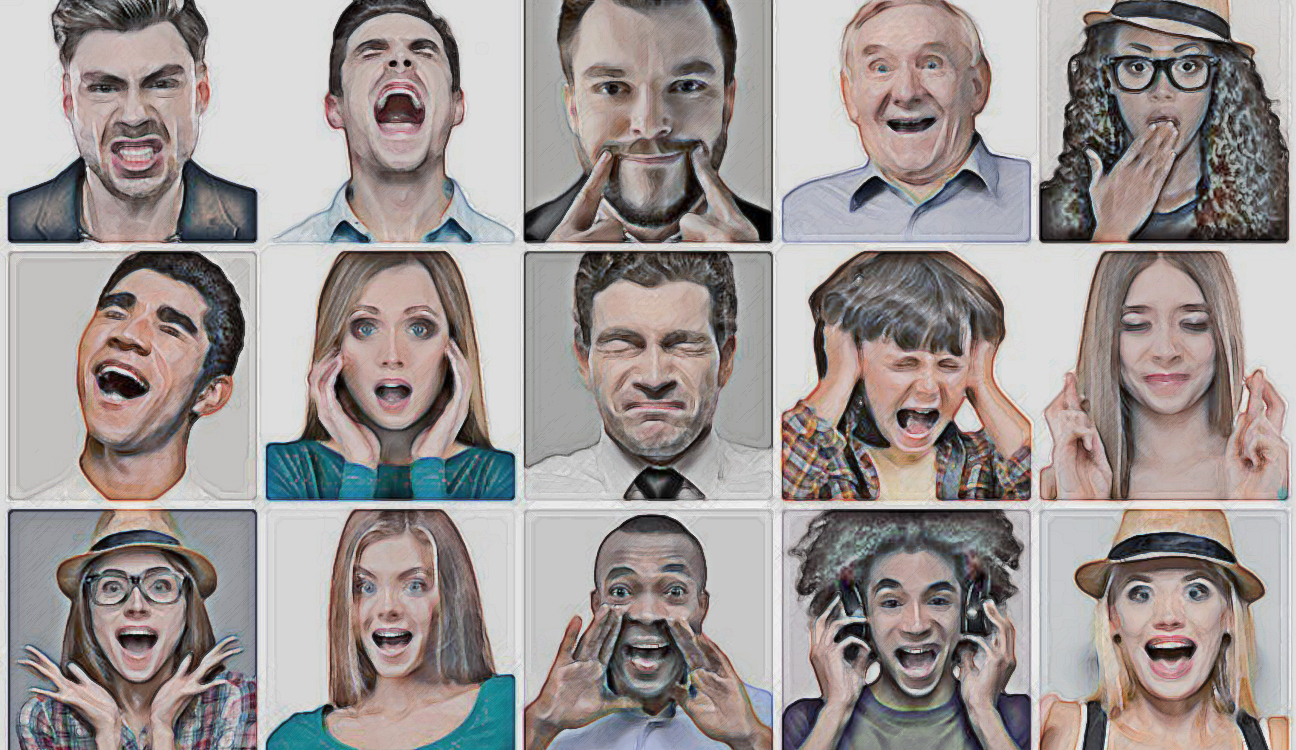
Feelings and emotions make us have empathy and compassion for one another. Our interaction with other people goes through emotions. Every normal person consciously or unconsciously grabs through facial expression or body language their state of mind, the way the other feels. As a result, we generate a feeling or emotions towards that person, a reaction to that person which we express through our own facial expressions and body language. Without a word being said we already communicate with each other through emotions. Imagine a person who doesn’t show emotions and delivers a message speaking in a monotone way. We never are able to connect with that person because we don’t know how we have to feel toward him or her. It simply isn’t human. Feelings and emotions are what make us human humans.
Sympathy, empathy and compassion
People are social animals and need to work and live together in a group in order to survive. This means we, as individuals, have to interact and help one another to achieve for ourselves and for our community more comfort and avoid conflicts. People can accomplish this by relating to themselves and others with sympathy, empathy, and compassion.
Sympathy is the heightened awareness of another person’s plight as something to be alleviated. The emphasis here is awareness i.e. coming to the knowledge that there is another person whose situation is deserving of your attention and that there is some element of pain/suffering the person is experiencing. From there, care and concern are shown toward that person. It typically sounds like this, ‘I’m sorry for your loss’ or ‘I hope you are coping well.’
Empathy is the attempt of one who is self-aware to understand and even vicariously experience another person’s situation and emotional state. Most people refer to this as ‘being in another person’s shoes’. The emphasis here is experience i.e. being able to almost feel what the other person is going through. It typically sounds like this, ‘It sounds like you had a bad day and probably need to do something fun’. On the other hand, when there is a lack of feelings, emotions or concerns we speak about apathy.
Compassion takes it a step further, a person feels empathy and then a desire to help alleviate the suffering or ease the pain of the other person. The focus here is on the action, like wanting to help. Having compassion for another requires one to put the other person first, imagine what the person is going through, then consider ways in which you can help the other person to feel better. It typically sounds like this, ‘I can feel your pain and it must be so hard to go through this alone. Is there any way I can help?’
Many believe that the basic principle of compassion is the golden rule:
‘One should treat others as one would like others to treat oneself.’
The golden rule is endorsed by all the great world religions, cultures and influential people from all over the world to resolve or prevent conflicts.
The basic concept of the golden rule was found in ancient Babylon as ‘An eye for an eye, a tooth for a tooth’. This means that a person who has injured another person is penalized to a similar degree. In modern times the application of the golden rule results in the victim receiving the value of the injury in compensation, very often it’s financial. The barbarian interpretation of this law is still around in many cultures. Think about the death penalty for murder. Also deep down in ourselves, we still feel the urge to physically harm people when we or a loved one is harmed, emotionally or physically. We have the desire to take action.
In short:
- Sympathy is about being aware.
- Empathy about having similar experiences.
- Compassion about taking action.
The dark side of sympathy, empathy and compassion is…
Shadenfreude and Sadism
Schadenfreude is finding pleasure derived from the misfortune of others.
When the office slacker makes a mistake that could cost them a pay raise, do you truly feel bad, or do you have to suppress your smile? If you smiled, you’ve just experienced schadenfreude, a bit of enjoyment at the misfortunes of others. We experience this seemingly odd emotion because it makes us feel better about ourselves. It’s a self-affirming boost.
While Schadenfreude is finding joy in the pain of others as a passive witness, sadism is finding pleasure in actively causing pain, cruelty, degradation, or humiliation, or, enjoying watching such behaviors inflicted on others. This behavior is mainly reserved for sociopaths and psychopaths. People that operate far outside the norms of normal human beings.
Learning
The paradox of comfort and conflict is that the search for comfort can only go through conflict. We need to have skills or tools. If we don’t have them, we need to learn new skills or gather the tools and information to solve or face the conflict that after resolving will bring us a step closer or maintain the comfort we have. We observe how others handle everyday life tasks and adapt them to our own situations in order to make our life easier.
After a conflict is over you always learn something or get more comfortable with the conflict. For example: If you for the first time need to tie your shoes it’s a difficult task, but the more we practice, the easier it becomes and the more comfortable we feel when the problem occurs. We start to operate in our comfort zone again and all the anxiety about the problem disappears. By doing something repeatedly that is hard and uncomfortable and hard at first, will become easy and comfortable over time.
Since life is a constant continuation of little conflicts that need to be solved, it’s hard for the mind to stay in reality and focused on the current tasks or jobs. Every now and again it needs a break from reality and our mind starts to wander off into another situation or world. This is called daydreaming.
Daydreaming
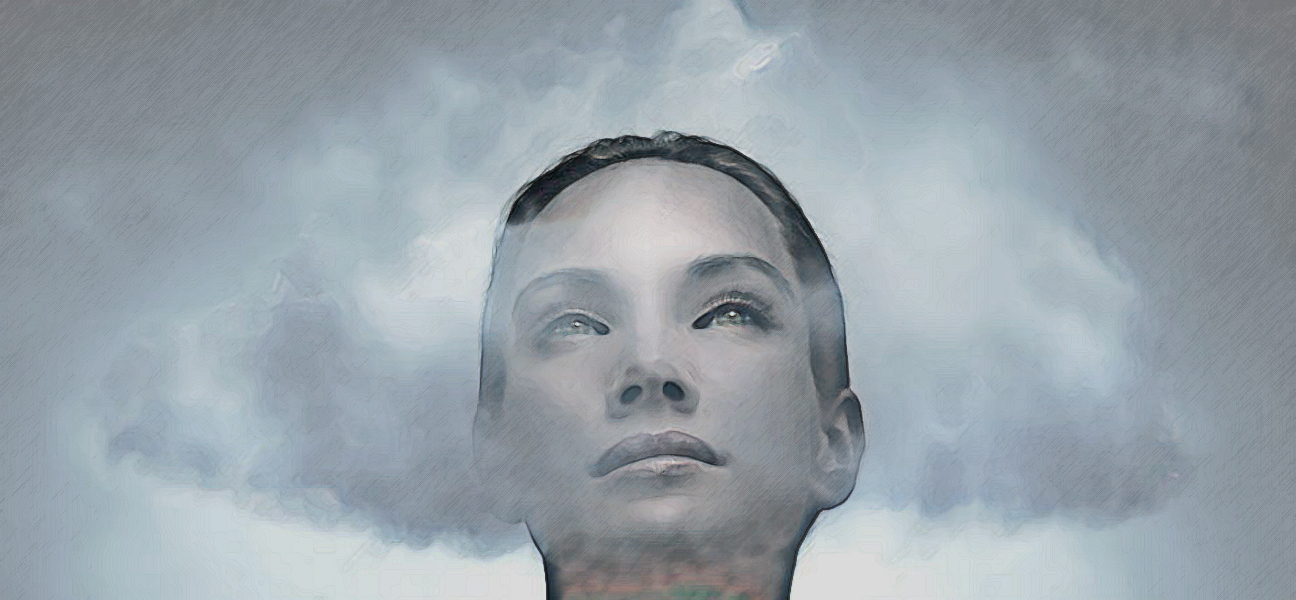
Daydreaming is a short-term detachment from one’s immediate surroundings, during which a person’s contact with reality is blurred and partially substituted by a visionary fantasy, especially one of happy, pleasant thoughts, hopes or ambitions, imagined as coming to pass, and experienced while awake.
Daydreaming is like meditation, it allows your mind to take a break, a mini-vacation in which to release tension and anxiety from everyday life or it can help in managing a conflict or problem we have to face.
We daydream about the people we love. We imagine sharing good news with them, along with our successes and failures. Daydreams help us to complete or cope with very boring but necessary tasks or jobs. We let the mind wander off into a more pleasant world, away from current reality. By daydreaming, we try to run different scenarios about how to solve a problem, or how we would act in a certain situation. The scenarios we run in our daydreams usually start with ‘what if’. What would happen if this.., wouldn’t it be nice if…
We are in control of how our daydream looks, which is different from the dreams that occur at night when we are sleeping.
Dreams
Dreams are successions of images, ideas, emotions, and sensations that occur involuntarily in the mind during certain stages of sleep. The content and purpose of dreams are not definitively understood. In modern times, dreams have been seen as a connection to the unconscious. They range from normal and ordinary to overly surreal and bizarre. Sometimes dreams, how absurd, bizarre or surreal they are, can be experienced as very real, as if we are awake. The events in dreams are generally outside the control of the dreamer. Dreams can at times make a thought occur to the person or give a sense of inspiration.
Dreams are in fact night stories, they have a narrative structure in were we as the protagonist of the story get confronted with all kinds of conflicted situations that keep us busy during the waking hours. Many scientists believe that dreams may be an innate training program, allowing our brains to safely practice responses to threatening situations.
Enough evidence exists to identify dreaming as the fat red thread that ties together the fantasies of pretend play, fiction stories, and dreams, as a function to give us insight into dealing with the big dilemmas of human life in order for us to gain comfort and avoid conflict.
When we’re really invested into a movie or we’re really invested into a book, we’re actually entering into an altered form of consciousness. We seem to enter an absorbed or meditative state. We’re highly transported into this narrative world, and this is a unique form of consciousness because it’s not quite identical to being stimulus-driven or involved in some external task, but it’s also not quite the same as closing our eyes and imagining something. It’s like daydreaming.
Now… what have all these topics: comfort, conflict, emotions, feelings, dreams and daydreaming to do with why we go to the movies?
Conclusion
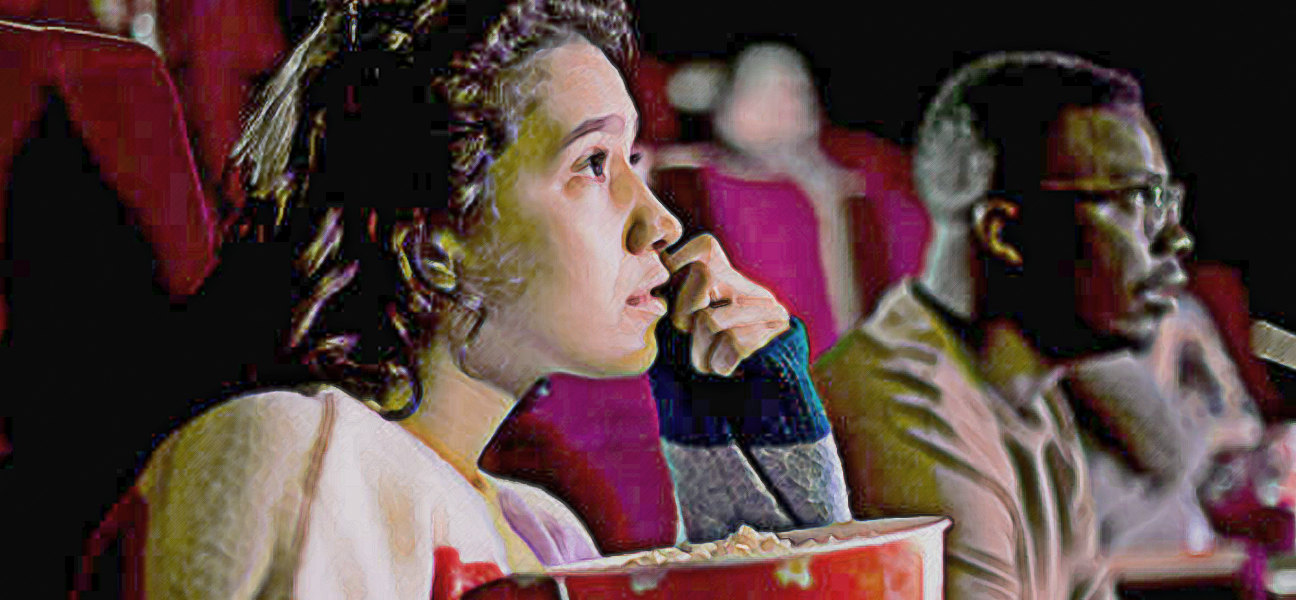
Well… We go to the movies because:
It’s the easiest way to take a break from everyday life and to experience and learn through the emotions of the characters about dangers and conflicts, judged from the safety of our seat.
The easiest way: we love comfort therefore for every task we take on, we always chose the road of less resistance or least effort. It’s easy to sit back and watch a story that you don’t even need to visualize or create the soundscape for in your head. It’s already done for you by the filmmakers.
Take a break from everyday life (escapisme) Our mind needs now and again to take a break, a mini-vacation to release tension and anxiety from everyday life. We do this by going into daydreaming, but when we go to the movies, the daydream or dream is already made for us.
Experience: The big size of the screen and the sound that comes from all angles creates the illusion of reality. It’s like we are in the middle of a dream or daydream.
Through the emotions of the characters: characters communicate to us about their experiences through emotions. It’s based on their emotions we feel empathy, compassion,… or hate for the character and it’s also very important that those characters possess the same human emotions and feelings as human beings would. Even cartoon characters in animated films are given human emotions and feelings by their creators in order for the audience to experience their journey and relate to it.
Learn about danger and conflicts: we observe how the characters in the movie behave or deal with danger and conflict and learn from them how to handle it. What we’ve seen and learned might come in handy later in our real life. This might subconsciously be the main reason why we are going to the movies or watching movies at home… to learn. When we watch a hero character doing silly things in nonmeaningful situations, we get bored. This is simply because there is nothing to learn from them.
It’s not about learning how to do a car chase or about jumping off roofs. That is just an experience you get brought into, your daydream or your dream. It is about learning from human interaction in conflicted situations.
Judged: It’s our natural instinct to judge everything and everyone around us, but we are conditioned to keep it to yourselves. However, movies and more so TV shows create a safe space for us to judge the actions of the characters and make a judgment on what we feel is right or wrong, who is good, who is bad. We are allowed to be the jury and make a verdict on what we see unfolding on screen and be vocal about it, without being frowned upon.
Safety of our seat: We avoid conflict because we don’t want to be harmed and we love comfort, a movie is the best means to put ourselves safely in the middle of a conflicted or a dangerous situation. We know we won’t get harmed, emotionally and physically, plus we can safely judge the characters and their actions on screen.

